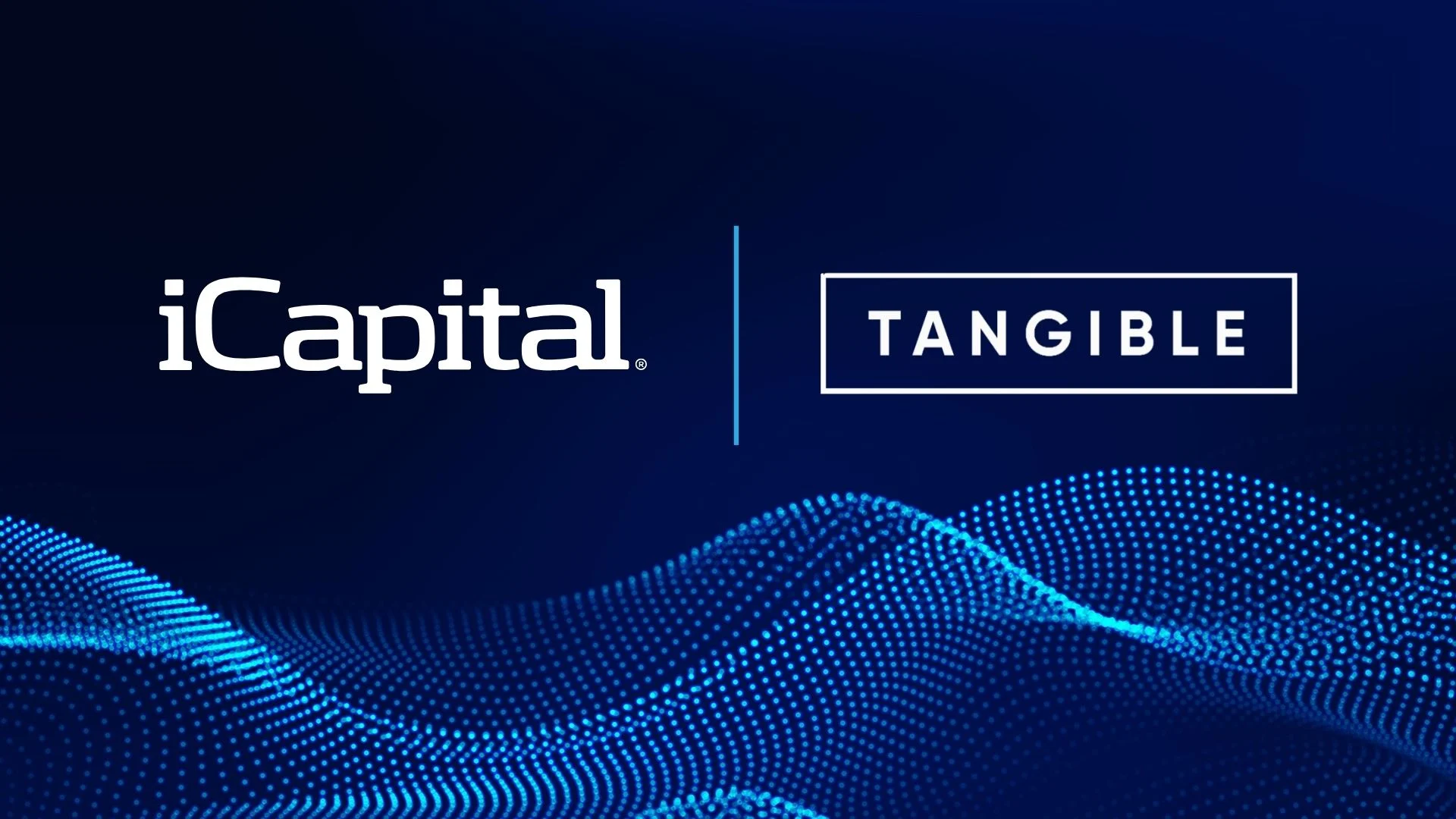A whirlwind first six months of 2022
As we wrote in our 2022 Outlook, it has indeed been the year of higher hurdle rates and lower potential returns — but to a much greater extent than we (and almost everybody else) anticipated. With stocks and bonds falling in concert, a classic 60/40 portfolio, which we expected in the best-case scenario to return just over 5% for 2022, returned -16% in the first half of the year.1
We also flagged that U.S. Federal Reserve (Fed) tightening would serve as a headwind to multiples. However, we again underestimated just how much, as the Fed adopted a much more aggressive tightening stance than anticipated in the face of unrelenting inflation. At the end of January, the market was projecting that the Fed funds rate would reach 2.6% by the February 2023 Federal Open Market Committee meeting, versus a projection of 3.5% by the end of June.2
The next six months
Overall, we think the second half of 2022 could mark a long-awaited return to more rational activity, on many fronts. As pandemic-induced imbalances in goods, services, housing and market prices, fiscal spending, and monetary policy, among others, continue to unwind, we expect a shift back toward prudence among consumers, corporates, the Fed, and market participants. This return to rationality is not a bad thing, but it does have implications for the economy and markets, discussed below.
Slower growth, but likely avoiding recession
Our base case is that the United States will experience a further slowdown but avert a full-blown recession in the second half of 2022 (avoiding two consecutive quarterly GDP contractions). Both U.S. and Eurozone growth are likely to slow to 1.5% year-over-year by the fourth quarter of 2022, while China growth could rebound to 5.0%.3 There are signs of U.S. demand slowing, including a weakening in the residential housing and commercial real estate (CRE) markets due to rate increases.4 But for growth to collapse into recessionary territory, we believe we would need to see something “break”—like higher rates creating unsustainable debt burdens or an asset price collapse that triggers a wave of deleveraging. Right now, we do not see these signs at any significant scale. The strength of consumer, corporate, and bank balance sheets, plus prudent financials and a lack of systemic overleverage, should help avert a crisis.


Risks include monetary policy tightening and rate hikes
Still, there is a chance that in the next six months central bank policy tightening and rate hikes could precipitate a “break” of some kind, although we do not envision the consequences to be systemic, at least not yet and not in the United States. However, there are areas of particular concern — these include cryptoassets and pockets of venture capital and unprofitable technology. Collateralized loan obligations, which comprise floating-rate leveraged loans taken on by lower-quality buyers, may see higher rates of default, although it is likely that borrowers have the financial resilience to absorb rate increases.
Finally, residential real estate in the Euro Area bears watching as most mortgages there are floating rate, and its residential market is likely overvalued. While the first two risks are not likely systemic threats, a steep decline in European real estate could have more significant ramifications. For that reason, we prefer to skew equity allocations toward the United States and, in particular, U.S. financials.
The S&P 500 could test another low
After a big multiple reset, earnings revisions are expected to trend down, with earnings-per-share (EPS) numbers dropping a median 13% during previous recessionary periods.5 The blended next-12-month EPS estimate for the S&P 500 is $239.6 If we assume a slowdown rather than a full-blown recession, estimated earnings projections may be cut by roughly half of that median (6.5%), which would bring us to $224. Further assuming that the multiple holds at around 16x, this would generate a fair value of around 3,575 for the S&P 500, 6% below the closing price on June 30.7


A further dip could create attractive opportunities
We have seen a major reset across many segments. There has been a material upward repricing in rates across the curve, offering more attractive risk-free yields, while S&P 500 equity valuations at 15.9x forward price-to-earnings are now below the five- and 10-year averages of 18.6x and 17.1x, respectively. At the same time, the S&P 500 and credit spreads, when looked at together, price in a 77% recession probability, compared to a 36% — 43% likelihood implied by economic data.11
Crypto lost roughly $1.5 trillion in market cap in the first half of the year,12 while unprofitable tech stocks are down 51.3% over the same period13 and late-stage VC valuation show signs of cracking.14 Consumer sentiment is at its lowest level since the 1970s and bearish sentiment is at heights unseen since the 1980s.15 Finally, the economic surprise index turned negative.16 While we are not out of the woods, the path appears less treacherous. For long-term investors, this necessary reset has improved the risk-reward balance, with forward returns likely to rise. Contrarian investors should take note.
Revisiting Our 2022 Picks
Venture Capital
WE SAID:
VC will continue to provide significant opportunities for value creation, but careful selection is critically important. A repeat of 2021’s performance is unlikely, but we believe returns can continue to outpace those of private equity and public markets. Record cash on balance sheets should drive strong M&A interest, with valuations moving in tandem with value creation.
The outlook for VC has shifted, with an unexpected and significant public market correction in tech. There are signs that the VC market is cooling, including declining deal and IPO activity.17 These dynamics could have a significant impact on funds in the “harvest” phase, that now face a closed IPO window, a higher probability of down rounds, and potentially longer hold periods. While caution is warranted, the fundamental long-term investment thesis for VC, particularly in early-stage investments, is unchanged. Manager selection remains paramount.
Crypto Assets
WE SAID:
The crypto ecosystem could provide potential opportunities for hypergrowth, driven by decentralized exchanges, automated market makers, smart contracts, and Web 3.0 and the resulting decentralized social media and gaming. Given that we are still in the early stages of the adoption of DeFi and its protocols, we see massive potential for growth and disruption ahead.
Cryptocurrency and crypto-linked asset performance has been severely strained, with bitcoin slumping 57% and the broader Bloomberg DeFi Index down -72%.18 Like some unprofitable tech companies, cryptocurrencies do not have readily available projected cash flows that could be discounted back to present value. In this absence, cryptocurrency performance has become more correlated with unprofitable tech. Near-term caution is advisable, but our longer-term view on the asset class’s potential for growth and disruption is unchanged.
Private Credit
WE SAID:
Private credit continues to cement itself as a fast-growing asset class, well positioned for both current and anticipated market environments. Amid a 2022 backdrop of rising short-term rates, we see private credit – specifically middle-market direct lending strategies – offering a significant buffer to publicly traded high-yield or leveraged loans. Structural drivers should continue to propel private credit issuance.
The Cliffwater Direct Lending Index dipped marginally in the first quarter but the fundamental drivers propelling private credit, including a preponderance of floating-rate loans, should allow it to continue generating strong long-term returns on an absolute and risk-adjusted basis. We stress the importance of partnering with established managers of scale as overall default rates may tick up over the coming months, but the structural protections in private lending and, often, senior status in the capital structure should help moderate the impact.
Real Assets
WE SAID:
Real assets should offer an attractive return profile in 2022 given their strong income streams and hedging abilities amid an inflationary and rising-rate backdrop. In periods of inflation exceeding 3%, real assets have outperformed not just equities and bonds, but also private equity.19 In particular, commercial real estate offers attractive inflation-hedging characteristics and strengthening fundamentals. CRE has gained 7.4% so far this year.20
However, returns may moderate over the next few years due to slower economic growth and a higher cost of capital. Despite the challenges ahead, we maintain a cautiously positive outlook for real assets, particularly private real estate, thanks to the housing supply shortage, strong labor market, and ample supply of capital. Elsewhere, inflation that is both higher and more persistent than expected and faster-than-anticipated rate rises are conducive to strong performance for private farmland and infrastructure.
Hedge Fund Arbitrage
WE SAID:
Hedge fund arbitrage strategies will likely provide strong risk-adjusted performance in 2022, given that asset classes globally are seeing increased volume, in terms of issuance, and greater velocity, given increased volatility.
Arbitrage strategies—broadly represented by multi-strategy hedge funds—have outperformed traditional assets so far in 2022, with certain high-profile funds in positive territory.1 Amid persistent volatility and stock performance dispersion, we believe the outlook for these funds remains broadly favorable as they tend to be less sensitive to directional moves and instead rely on a diversified portfolio to capture temporary mispricings between assets.
Selling Put Options
WE SAID:
Selling options can help enhance the traditional forms of yield in a portfolio, particularly amid elevated volatility. Despite a reset to lower volatility throughout 2021, volatility remains high relative to pre-pandemic levels.21 Put volatility is systematically higher than call volatility and that spread today is especially elevated.
Volatility moved substantially higher this year, as the VIX index surged in the first half of 2022. Selling put options paid off as investors who sold a put on the S&P 500 would have been able to enter stocks at a lower level than by buying equities directly. Put sellers were able to collect a premium that at least partially offset losses elsewhere. Strategies that help monetize elevated volatility may continue to have a role to play. As better value emerges, investors may wish to buy the dislocation in equities with some downside protection via a structured note strategy.
1. eVestment, HFRI, as of June 13, 2022.
2. Bloomberg, as of June 30, 2022.
3. Ibid.
4. Ibid.
5. Goldman Sachs Research, as of May 18, 2022.
6. iCapital Investment Strategy, Bloomberg, as of June 30, 2022.
7. Bloomberg, as of June 30, 2022.
8. Ibid.
9. iCapital Investment Strategy, Bloomberg, as of June 30, 2022.
10. Bloomberg, iCapital Investment Strategy, as of June 30, 2022.
11. JPMorgan, as of June 17, 2022.
12. TradingView, CoinMarketCap, as of June 30, 2022.
13. Bloomberg, as of June 30, 2022.
14. Pitchbook, as of June 30, 2022.
15. Bloomberg, iCapital Investment Strategy, as of June 30, 2022.
16. Bloomberg, as of June 30, 2022.
17. Pitchbook, as of June 14, 2022.
18. Bloomberg, as of June 30, 2022.
19. iCapital, AltsEdge, as of September 30, 2021.
20. eVestment, S&P Global, iCapital, as of March 31, 2022.
21. Bloomberg, as of June 30, 2022.
IMPORTANT INFORMATION
The material herein has been provided to you for informational purposes only by Institutional Capital Network, Inc. (“iCapital Network”) or one of its affiliates (iCapital Network together with its affiliates, “iCapital”). This material is the property of iCapital and may not be shared without the written permission of iCapital. No part of this material may be reproduced in any form, or referred to in any other publication, without express written permission of iCapital.
This material is provided for informational purposes only and is not intended as, and may not be relied on in any manner as, legal, tax or investment advice, a recommendation, or as an offer or solicitation to buy or sell any security, financial product or instrument, or otherwise to participate in any particular trading strategy. This material does not intend to address the financial objectives, situation, or specific needs of any individual investor. You should consult your personal accounting, tax and legal advisors to understand the implications of any investment specific to your personal financial situation.
ALTERNATIVE INVESTMENTS ARE CONSIDERED COMPLEX PRODUCTS AND MAY NOT BE SUITABLE FOR ALL INVESTORS. Prospective investors should be aware that an investment in an alternative investment is speculative and involves a high degree of risk. Alternative Investments often engage in leveraging and other speculative investment practices that may increase the risk of investment loss; can be highly illiquid; may not be required to provide periodic pricing or valuation information to investors; may involve complex tax structures and delays in distributing important tax information; are not subject to the same regulatory requirements as mutual funds; and often charge high fees. There is no guarantee that an alternative investment will implement its investment strategy and/or achieve its objectives, generate profits, or avoid loss. An investment should only be considered by sophisticated investors who can afford to lose all or a substantial amount of their investment.
iCapital Markets LLC operates a platform that makes available financial products to financial professionals. In operating this platform, iCapital Markets LLC generally earns revenue based on the volume of transactions that take place in these products and would benefit by an increase in sales for these products.
The information contained herein is an opinion only, as of the date indicated, and should not be relied upon as the only important information available. Any prediction, projection or forecast on the economy, stock market, bond market or the economic trends of the markets is not necessarily indicative of the future or likely performance. The information contained herein is subject to change, incomplete, and may include information and/or data obtained from third party sources that iCapital believes, but does not guarantee, to be accurate. iCapital considers this third-party data reliable, but does not represent that it is accurate, complete and/or up to date, and it should not be relied on as such. iCapital makes no representation as to the accuracy or completeness of this material and accepts no liability for losses arising from the use of the material presented. No representation or warranty is made by iCapital as to the reasonableness or completeness of such forward-looking statements or to any other financial information contained herein.
Securities products and services are offered by iCapital Markets, an SEC-registered broker-dealer, member FINRA and SIPC, and an affiliate of iCapital, Inc. and Institutional Capital Network, Inc. These registrations and memberships in no way imply that the SEC, FINRA, or SIPC have endorsed any of the entities, products, or services discussed herein. Annuities and insurance services are provided by iCapital Annuities and Insurance Services LLC, an affiliate of iCapital, Inc. “iCapital” and “iCapital Network” are registered trademarks of Institutional Capital Network, Inc. Additional information is available upon request.
©2024 Institutional Capital Network, Inc. All Rights Reserved. | 2024.01








